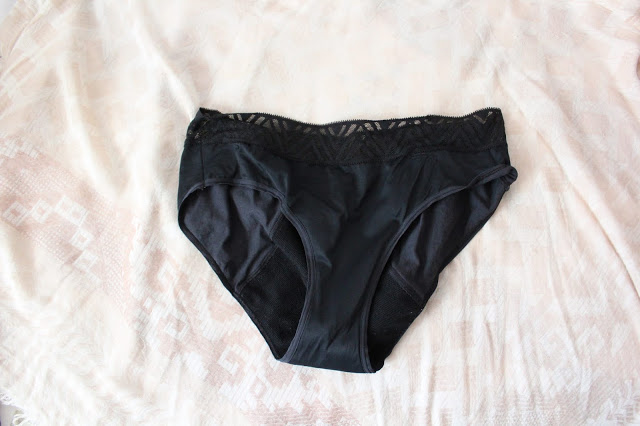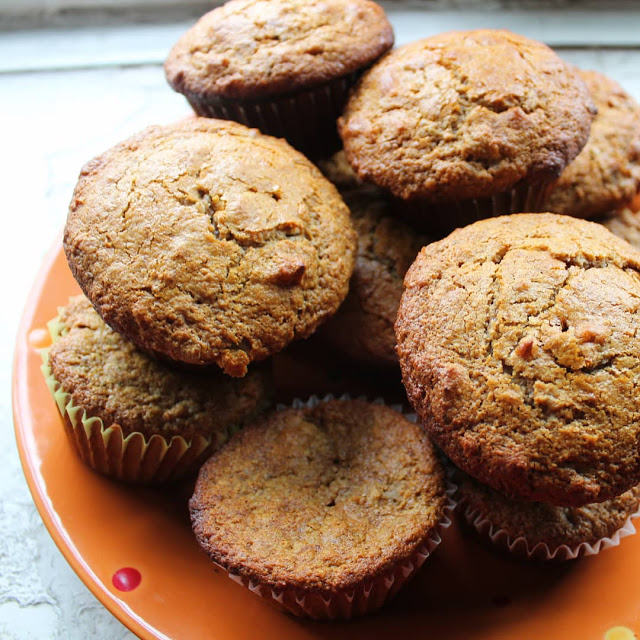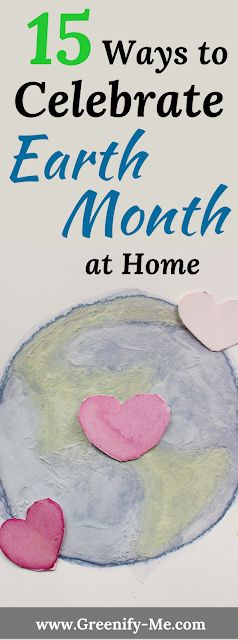You’re probably aware Earth Day is April 22nd. This year marks the 50th year of the holiday! But did you know April is considered Earth Month in general? It’s an entire month dedicated to helping the planet – which is such a beautiful idea. Unfortunately, a lot of Earth Day events are cancelled right now, but that doesn’t mean there aren’t ways you can celebrate Earth Month at home. Living a zero waste life is a great start, but there are certainly ways to go the extra mile, even while sitting on your couch. Here are 15 ways to celebrate Earth Month at home this year.
This post contains some affiliate links. This means if you choose to purchase one of these items I will make a very small commission at no extra charge to you. Please see my disclosure policy for more information.
______________________
15 Ways to Celebrate Earth Month at Home
1. Support zero waste small businesses
Right now, so many small businesses are being hurt by this virus. They need our support now more than ever!
Here are 10 zero waste shops that I absolutely love. They deserve ALL the support right now. They’re small businesses that offer an array of zero waste essentials for all areas of life, such as the bathroom, kitchen, motherhood, personal care, etc.
Lets make their job a little easier – whenever we need something, lets agree to look towards one of these ethical, low waste shops first. It will help support them staying open, which is better for the planet and economy!
2. Read some zero waste books
Stuck inside with some free time? Why not give one of these zero waste books a read?
As someone who graduated with an English Major, books are kind of a big deal. I have a whole bureau I transformed into a space for storing my books…and even that’s not enough to contain them.
If I had to choose one weakness of mine, it’s definitely a good book. Before this virus hit, I really enjoyed trips to Barnes and Noble and the library.
Now though, with everyone inside, I can’t do that anymore. So instead, I’m catching up on my reading! I have tons of books and might as well utilize this time to read them right?
You should too – better yet, get some new zero waste books for yourself. It’ll help expand your mind and give you something to do.
3. Grab some zero waste period products
With tampons and pads flying off the shelves, now is a good time to switch to zero waste period products.
It may seem a little icky at first – but reusable period products are amazing! Not only will they reduce waste, but they’ll save you so much money too. And there’s honestly no reason to spend more money every month just for menstruating.
I recommend – they sell amazing period panties. They work like magic and are so comfortable. I have the and – they’re amazing and provide excellent coverage.
I also use reusable cloth pads. I recommend checking out Tiny Yellow Bungalow’s shop – she sells some amazing reusable cloth pads that are cute, comfy and durable. Plus, they sell menstrual cups too.
4. Get a TUSHY
Out of toilet paper? Now’s a good time to grab a TUSHY.
I know that sounds funny, but a TUSHY is a bidet.
Bidets gently wash your behind so you don’t have to wipe as much. They’re also great for people who menstruate, if you know what I mean.
Bidets will cut your toilet paper usage by 80 percent! That’s a pretty big deal, considering how much toilet paper our nation is consuming at the moment…
Did you know one roll of toilet paper requires 37 gallons of water to make? That’s a lot of water waste when you think about how many rolls people are buying right now.
Switch to a TUSHY and your bum, and the planet, will thank you!
5. Donate to a environmental nonprofit
Feeling generous? Donate some money to an environmental nonprofit!
There are so many nonprofits that do amazing work on behalf of the planet. And you don’t have to donate a lot because every little bit counts.
I like to donate at least $20. It may not seem like much, but again, it all adds up.
Here are some of my favorite environmental nonprofits (and why):
- National Audubon Society: I’m a member! Their mission is the conservation and restoration of natural ecosystems, with a strong focus on birds and other wildlife.
- Rainforest Action Network: I’ve donated before. They take action against the companies and industries driving deforestation and climate change.
- Ocean Conservancy: They are on the front lines of ocean protection, investing in research, leadership and advocacy that advances science-based solutions that work.
- The Honeybee Conservancy: My local zoo is a partner! Support bees, habitat, local communities, and food justice.
- Ample Harvest:Reducing food waste by enabling Americans who grow food to easily donate their excess produce to local food pantries.
These are only a few of the amazing environmental nonprofits out there. There are so many more you can support. I suggest looking for ones that are local to your area to make an even bigger impact.
6. Start a garden (or container garden)
I don’t have much room for gardening, since I live in an apartment. But that doesn’t stop me!
Every year, I have a container garden. I love growing things from seed. I almost always grow basil, lettuce and mint from seed. They’re easy and I highly recommend them.
To start a container garden, grab some terra cotta pots and organic seeds. I recommend easy to grow herbs like basil and mint, or easy to grow veggies like lettuce and swiss chard. Follow the instructions on the seed label and you’ll be fine.
You can also reuse a paper egg carton to try and grow seeds. Or you can cut up and upcycle some yogurt cartons to grow seeds from.
Use some compost to get your plants growing! I use it for potting soil and my plants love it. I got mine from my local farmers market, but I’m sure you can check local nurseries or ask a friend who composts if you can pick up some.
If you have gardening space, please utilize it! Gardening is not only a rewarding pass time, but also a great way to get package free food.
I mean, think about it – you can just go out and pick your own veggies and fruits. They don’t come wrapped in plastic when they’re grown fresh off the vine, that’s for sure.
Plus, you can grow things your way. You don’t have to worry about any nasty pesticides on your plants if you grow them yourself. It’s just so much better.
It’s also a great excuse to get outside…which we can all use right about now. If all you have is a front yard, consider making a part of it a small veggie patch! No one ever said you couldn’t.
7. Paint using plant dyes
This is becoming my latest obsession. I LOVE working with plant dyes. The painting above was made using plant dyes! I used beets for the hearts, red cabbage for the blue, and I mixed turmeric and red cabbage to create the green color.
I’m the creative sort, so I’ve always been into drawing, coloring, etc. I loved painting but always felt bad about the waste it would produce, the chemicals in the paint, etc.
But with plant dyes, you don’t have to worry about any of that! They’re all natural, toxin free, and zero waste.
Plus, there are so many beautiful colors and unexpected surprises when using plant dyes. For example, did you know avocado pits and peels make a dusty pink color? It’s true!
I advise you to experiment with plant dyes – they can be used for painting, but also for so much else – like dying actual fabric, or even dying wooden beads. The possibilities are infinite.
Here’s how to make some simple plant paints.
Colors:
- Red + pink: Beets
- Blue: Red cabbage
- Yellow: Turmeric
- Green: Turmeric + red cabbage
- Orange: Yellow onion skins
Directions:
- Choose which colors you want to make and take at least 1 cup of the plant matter, adding it to a pot. If you’re using turmeric, you only need one tablespoon – not one cup.
- Now fill the pot with water so that it at least covers the plant matter. Turn it up to a boil. Once it reaches a boil, cover the pot and let it simmer for about 30 minutes.
- Now, remove it from heat and strain your plant matter, saving the dyed liquid. Compost the plant matter.
- Take 1 tablespoon of the plant dye, add it to a small bowl. Mix it with 1 tablespoon of arrowroot powder or flour. You can experiment here and play around with this to get a consistency and color you like. If you want to mix different dyes to get a different color, do so now in this small bowl. Ex: I mixed 1 teaspoon of red cabbage dye with 1 teaspoon of turmeric, then added 1 teaspoon of arrowroot powder, give or take. This made a green dye!
- Now start painting! You might notice that certain colors paint one way, then dry another way. For example, when I was painting using the red cabbage dye, it initially looked almost grey while painting it. But, once it dried? It created a pretty sky blue color.
- You can make your paint colors deeper by layering. Paint an area, wait for it to dry, then paint it again. Repeat this process until you reach your desired color. Enjoy!
Note: Plant dyes, when used for paint, kind of resemble water color. That’s the consistency you’ll get so be mindful of this and have fun! You may want to have a piece of scrap paper available to experiment on first – that’s what I did. Just have fun with it.
8. Cook something from scratch
I love cooking and baking. Honestly, being in the kitchen is a lot of fun for me.
During this time, we’re all in the house more. It just makes sense to cook and bake more.
When you make something from scratch, you can avoid a lot of packaging waste. I am almost always cooking meals from fresh package free ingredients.
I understand right now you may not have the easiest access to package free foods. But if you can still support local farmers markets, you totally should. If you can’t get your food completely package free, locally grown is the second best option!
My farmers market is still up and running, though they have definitely been a bit more hesitant to let us put things in our own produce bags – despite the fact my produce bag is probably cleaner than their single use produce bags.
Regardless, I love supporting their small business – it’s still better for the planet and my own health because their food is pesticide free and doesn’t take as long to get to me.
I really encourage you to cook your own meals during this time as much as you can.
Here’s what I’ve been loving right now:
- Maple walnut muffins: A super healthy muffin that’s perfect for breakfast or dessert!
- Homemade hummus: A tasty treat you can make that’s both healthy and low waste.
- Zero waste lunch ideas: These tasty lunch ideas are low waste and better for you.
- Vegan pizza: I’ve been making this almost once a week now and I have no regrets.
- Chocolate cake: So simple and too good not to make.
9. Take up sewing or knitting
I’ll admit, I’m not the best at sewing. And I certainly can’t knit. That said, I do want to get better at sewing at least.
There’s so much you can do with that skill! And, since we’re all forced to stay inside, there’s no time like the present to learn.
Sewing can help you repair buttons, darn a sock, or fix tears. It helps keep your items out of the landfill a little longer, which is always the goal.
If you’re good at sewing already, try making these reusable cloth masks. The CDC recommends Americans wear cloth masks while out in public.
Knitting is fantastic because you can make so much from it: Blankets, sweaters, hats, socks, etc. My grandma knitted me a poncho when I was a little girl and I cherish it more now than I did back then.
If you’re interested in taking up knitting, there are tons of tutorials online. Check out the video below for a helpful introduction to knitting I found online.
I like how the woman guides you through the basics of knitting. The simple tutorial she shows you looks doable and fun too!
10. Clean the house using zero waste disinfectant
Not sure about you, but I’ve been disinfecting things like crazy. Doorknobs, sneakers, countertops – you name it, I spray it.
But I’m not using traditional Lysol for the job. That stuff gives me intense allergies and for good reason – it’s packed with questionable ingredients. Instead, I’m using my homemade disinfectant spray.
I love using this zero waste disinfectant spray because it’s so darn simple to make. Plus, it’s super effective and low cost! It may be a little hard to get your hands on one of the ingredients, but I give tips on that in my post.
You can use it to spray down just about anything. Plus it’s a deodorizer so it’ll even remove smelly odors – such a nice added bonus. Sometimes I spray it around my compost pail…
11. Watch a nature documentary
What better way to celebrate Earth Month than to watch a nature documentary?
If you can’t get out into nature, the second best thing is to watch and learn about it from the comfort of your home. There are tons of fun and amazing nature documentaries out there!
Disney+ and Nat Geo are great places to find nature documentaries.
Here are some documentaries worth watching:
- Jane
- African Cats
- Born in China
- Wings of Life
- Monkey Kingdom
- Bears
- Chimpanzee
- Crimson Wing
- Wild Yellowstone
- Hostile Planet
- Great Migrations
- Giants of the Deep Blue
If you’re interested in watching documentaries revolving around zero waste and climate change:
12. Plant a tree…virtually
Since we can’t really go outside right now, how about we all plant a tree virtually using Treedom?
With just a few clicks, you plant a new tree. You can choose which kind of tree you’d like to plant online and the farmers will plant it in their country. How cool, am I right?
You can even choose to gift it and select how you’d like it delivered – by message, email or greeting card. No, the actual tree doesn’t get delivered to them of course. It’s simply planted in their honor.
The coolest part is you’ll be able to learn about your tree, including its history. You get to see photos and know where it’s growing, plus receive pictures and updates, so you’ll always know what the weather is like around it. Isn’t that amazing? Perfect for Earth Month!
13. Call your representatives
For all my fellow US citizens, I’m sure you’re familiar with the government rolling back environmental protections by now (sadly). It’s nothing new, but this crisis has only made things worse.
Throughout the spread of COVID19, the EPA has loosened the enforcement of certain environmental regulations. Not to mention they’ve lowered fuel economy and emission standards – even going so far as to state it’s putting ‘safety and family first‘. Like, what?
Not a good thing at all. But thankfully, there’s something you can do about it: Contact your local officials!
Find a list of information regarding your local, state, or federal representatives and call them. Here’s how to find them. Let them know you’re concerned about the EPA rollbacks – your voice is important!
14. Check off these zero waste bathroom swaps
I’m sure we’re all using our home bathroom a lot more these days. In that case, make sure you’re keeping it as sustainable as possible with these 10 zero waste bathroom swaps.
The bathroom is an area we spend a lot of time in, whether we know it or not. There are so many products that we use in there – from toilet paper to shampoo. Lets make it easier on the planet by going plastic-free.
I also love shampoo bars – just saying! They’re a great shampoo alternative when you can’t afford Plaine Products (another brand I love). EcoRoots sells amazing shampoo bars: They’re all-natural, plastic-free, and smell divine.
If you already nailed down the bathroom swaps, check out this in-depth guide to having a zero waste bathroom. I get a lot deeper than just simple swaps in this post, that’s for sure.
15. Start composting
One of the best things you can do for the Earth is to compost your food scraps.
Believe it or not, when food scraps (like egg shells, banana peels, avocado pits, etc.) get thrown out, they don’t properly decompose. In a landfill, there’s a lack of soil and moisture, so they tend to produce methane and other greenhouse gases.
Methane is a greenhouse that’s 30 times more potent than carbon dioxide. So, yeah, not exactly a good thing. Especially when you realize 40 percent of food in America is wasted…
These food scraps should not be thrown in the trash. They should be turned into beautiful, rich compost that feeds plants which feed us.
Lets all agree to start composting. Here’s a guide to composting in your apartment.
If you have a large amount of space available, consider investing in a compost tumbler. It’s fantastic for beginners and easy to use: You just add your food scraps, close the door on the tumbler and turn it 5 to 6 times every 2 to 3 days. The compost can finish in as little as 2 weeks in the proper conditions. Check out the tumbler here.
How do you plan on celebrating Earth Month at home this year?
If you’d like more tips for facing this difficult time, here’s how to stay zero waste during the coronavirus outbreak.
If you enjoyed this post, be sure to share it! If you like my content, sign up for my newsletter to get notified every time I write a new blog post. To support me even further, please consider buying me a cup of tea to help support my blog.



















Conventionally, bulk food shopping refers to buying large amounts of food, like a 10 pound bag of rice instead of one pound or a gallon of full movies about milk instead of one pint.